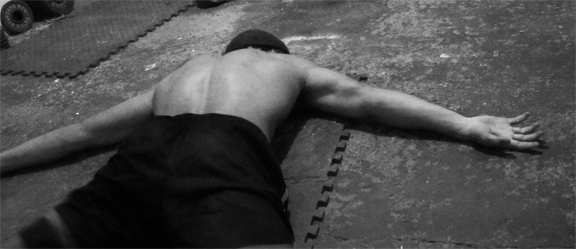When you think of the word “noise,” you probably think of the word “sound.” “What was that noise over there in the corner?” But in physics, noise is an unwanted addition to a signal. “I’m trying to tune in to this radio station, but there’s a lot of noise so it’s not very clear.” Noise [...]

When you think of the word “noise,” you probably think of the word “sound.”
“What was that noise over there in the corner?”
But in physics, noise is an unwanted addition to a signal.
“I’m trying to tune in to this radio station, but there’s a lot of noise so it’s not very clear.”
Noise is a problem.
Everything you do in the gym and everything you shovel down your throat gets assimilated as a signal. I talked about this before in Flies, Wasps, and Bears.
Just like tuning into a radio station, you want the signal transmitted as clear as possible. Noise is a no no. Noise makes things fuzzy. So you adjust the antenna. You move the stereo. You do a bunch of things just to avoid noise and ensure that you’re only receiving one signal.
It’s the same thing with sending signals through out your body. All of the training you do sends a signal. It nudges your body to adapt a certain way.
It’s much easier to nudge if you’re only giving one signal and you send that signal with a semblance of frequency.
With the clean bulk, it’s your job to send one signal: build muscle.
That’s it. That’s the end of your responsibility on the signaling end when it comes to training.
Where most people fail is trying to send too many signals via training. Too many signals means a lot of noise.
So you might train hard. Lift some weights in a way that’s going to build you an x physique. Good. That’s a good signal.
But then people feel like they also have to do some training that’s going to combat fat gain. So they might do some high intensity interval sprints one day. Some low intensity aerobic work the next. Some “finishers” the next. (By the way, I absolutely hate “finishers” and the idea of “finishers.” I’ll save that for another day though.)
Lo and behold, you’re now sending three distinct “signals” to your body. You’re sending one from standard barbell strength training. You’re sending one from your high intensity interval training. And you’re sending one from low intensity aerobic work. You might even be sending one from your finisher, but I’ll save the remarks about intelligence for another time.
- Standard barbell training: muscular strength, hypertrophy
- High intensity interval training: lactic anaerobic energy system development
- Aerobic training: aerobic energy system development
(P.S. If you don’t know the difference between energy systems, you should read the free eBook I give away when you sign-up for my newsletter. (Top of screen.) It will be gone soon, so grab it while you can.)
What does it mean?
Your body, and it’s finite capacity for adaptation, doesn’t really know which way to go. It might dabble in all of them. But it has to pick and choose. It has to filter a lot of noise. And anytime you’re filtering noise, the primary signal isn’t as strong or as “clear” as it can be.
If you’re trying to “clean bulk” you shouldn’t need to lose fat. You should be at a solid base. Meaning you don’t need to train for fat loss anymore. That’s done with. The only thing left is building the muscle.
What you do training-wise isn’t going to decide whether or not you gain fat. That’s all nutrition.
So the first rule: train to build muscle, not to lose fat.